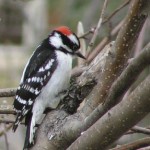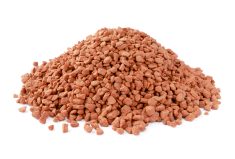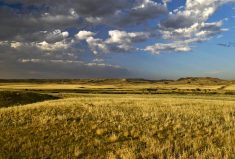While you may think our harsh winter weather is “for the birds,” you might be wrong. People who regularly feed birds are experiencing a disappointing year. The number of birds visiting backyard feeders has dropped drastically.
While the decline is most likely due to shortages of natural food, it is a safe bet that deep snow and cold temperatures are also contributing factors.
In Neepawa, our backyard feeder is busy, but we are seeing fewer species than usual and an overall reduction in numbers. Earlier on, blue jays were regular visitors, but they have been absent for weeks. Purple finches, nuthatches, chickadees, and woodpeckers appear frequently. Occasionally we get a pine siskin, goldfinch or a house finch, but not many. This appears to be a general trend across much of Manitoba this winter.
Read Also

Mazergroup’s Bob Mazer dies
Mazergroup’s Bob Mazer, who helped grow his family’s company into a string of farm equipment dealerships and the main dealer for New Holland machinery in Saskatchewan and Manitoba, died July 6 from cancer.
Fewer in number
Near Deerwood, Man., Joan McDowell feeds birds every winter. She reports having many of the regular birds at her feeder, but a general decrease in numbers.
“We have noticed fewer birds,” she said. “We have had no blue jays since before Christmas, and we can’t remember seeing any kind of finches this year.” However, she gets lots of nuthatches, chickadees, downy woodpeckers and hairy woodpeckers.
In the Pembina Valley near Manitou a resident there echoes the same thought. Generally speaking, the number of birds at backyard feeders is lower compared to past years. They report fewer purple finches, house finches, crossbills and evening grosbeaks.
Meanwhile, near Onanole, the annual Riding Mountain Christmas Bird Count participants recorded sighting only 24 bird species this year. This is the second-lowest number recorded since the group began their annual count.
-
Blue Jay
photo: Bill Stilwell
-
Woodpecker
photo: Bill Stilwell
Feeding the birds
Feeding winter birds is for people’s enjoyment as much as it is for our feathered friends. It is a pastime that makes us feel good while helping birds survive the winter.
The reward for most people is the sheer enjoyment of seeing birds close up and, observing their behaviour. Some birds, such as the purple finch or blue jay, add a splash of colour on a bleak winter day.
From the Manitoba Co-operator website: Warm, cold and the polar vortex
Feeding winter birds is not difficult. There are only two main requirements — feed and a place to set it. However, there are several additional details that should be considered.
Place the feeder where the birds are not going to be injured by flying into your window. That means you either put the feeder real close to the window or well away. This ensures they are braking when they land on the feeder and they don’t crash into the window when taking off. Birds need room to manoeuvre.
Sheltered
Put them in a sheltered place where birds don’t get blown off the feeder by our Manitoba winds. It also allows them to stay warmer. Once feeding starts, it must continue non-stop until spring.
A bird feeder does not need to be elaborate or fancy. Many people make feeders by modifying a two-litre drink bottle. Others are small plastic types purchased at department stores. The longest lasting and most user friendly are the wooden “hopper-style” feeders, where seeds automatically flow onto a platform.
Regardless of where you live, or the type of feeder, winter bird feeding is an enjoyable pastime. The colours will brighten your winter days. Inevitably, you will learn more about habits and characteristics of native wildlife. It makes your life more fulfilling.





















